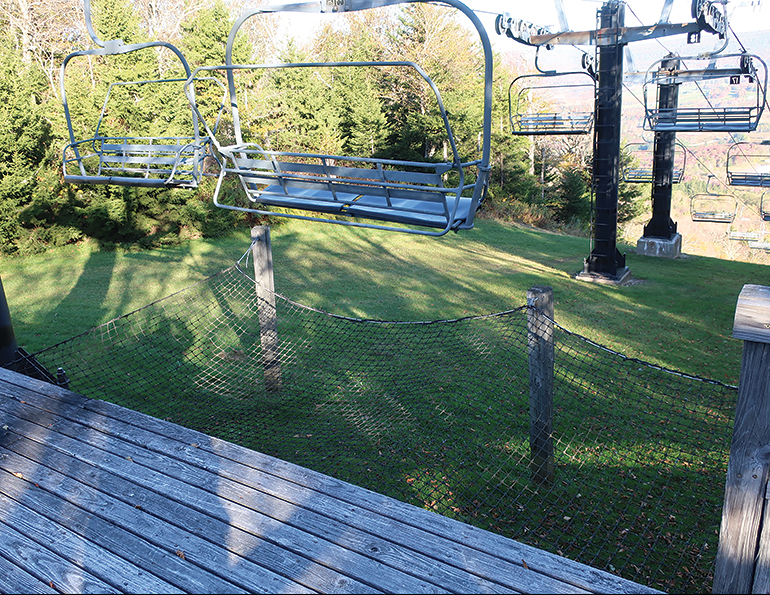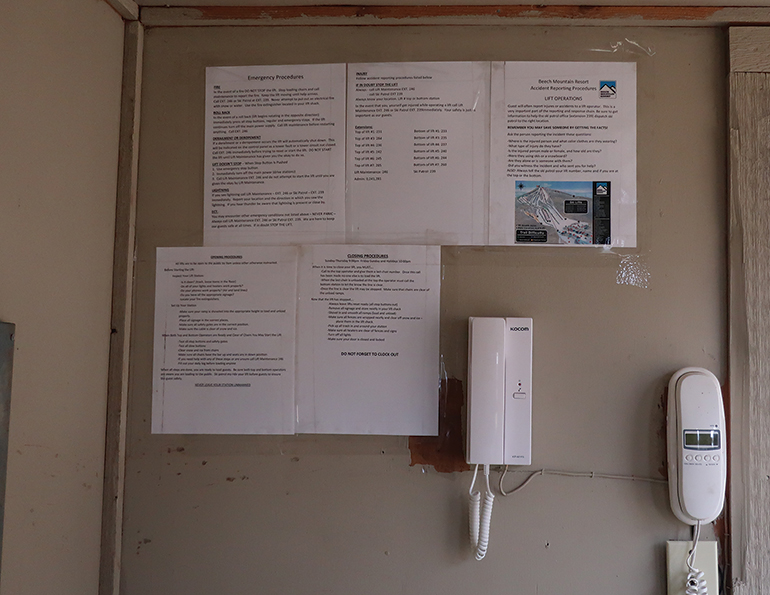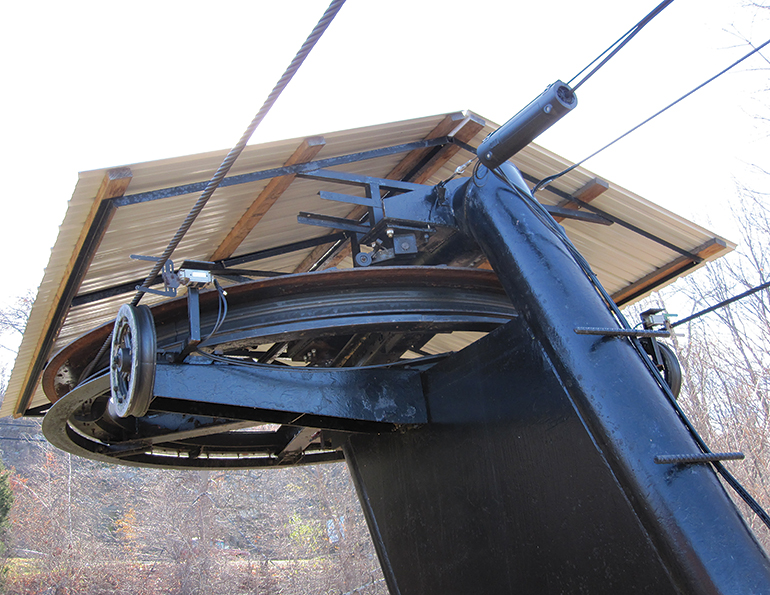SAFETY NET
 The arrival deck for a chairlift, like any raised platform, needs a good way to protect people and stuff from falling off. A railing—the standard solution for protecting people at height—is obviously impractical, so netting, as shown here at Canaan Valley, W.Va., is often the best solution. This arrangement provides a margin of safety for riders who, for whatever reason, fail to unload at the proper point on the unloading ramp, and for lifties as they are working on the deck. Plus, it catches gloves, helmets, goggles, and other personal items that might get dropped as riders approach the top terminal and prepare to unload. One caution: use care when extracting anyone from the netting, as they or their gear might get tangled up. This especially applies to persons in a sitski or using other modified or specialty ski gear.
The arrival deck for a chairlift, like any raised platform, needs a good way to protect people and stuff from falling off. A railing—the standard solution for protecting people at height—is obviously impractical, so netting, as shown here at Canaan Valley, W.Va., is often the best solution. This arrangement provides a margin of safety for riders who, for whatever reason, fail to unload at the proper point on the unloading ramp, and for lifties as they are working on the deck. Plus, it catches gloves, helmets, goggles, and other personal items that might get dropped as riders approach the top terminal and prepare to unload. One caution: use care when extracting anyone from the netting, as they or their gear might get tangled up. This especially applies to persons in a sitski or using other modified or specialty ski gear.
INFO ORGANIZER
 There can be a lot of information a liftie must know to do the job right. This bulletin board in a lift shack at Beech Mountain, N.C., displays relevant info—including procedures and policies relating to lift operations, what to do in an emergency, and to accident investigation—in a clear, concise, and conspicuous way. And it does so in a neat and organized fashion; it’s a visual representation of how we want our lifties to function and to present themselves. The greatest strength of this board, though? That would be the two phones: one for resort-wide use, the other a dedicated line between the top and bottom of the lift to keep the line of communication open at all times.
There can be a lot of information a liftie must know to do the job right. This bulletin board in a lift shack at Beech Mountain, N.C., displays relevant info—including procedures and policies relating to lift operations, what to do in an emergency, and to accident investigation—in a clear, concise, and conspicuous way. And it does so in a neat and organized fashion; it’s a visual representation of how we want our lifties to function and to present themselves. The greatest strength of this board, though? That would be the two phones: one for resort-wide use, the other a dedicated line between the top and bottom of the lift to keep the line of communication open at all times.
BULLWHEEL COVER
 It’s not necessary to put a roof over every top terminal bullwheel, but it’s often a good idea to do it anyway. And Hall lifts, like this one at Mount Peter, N.Y., require it. Mountain manager Karl Kullberg and the Mount Peter crew replaced an aging wood roof with a metal one to protect the bullwheel from the elements and prolong the life of the bullwheel bearings, prevent icing, and to protect riders from dripping fluids—which can be an annoyance at a minimum, and often a cleaning expense for the resort. For older lifts such as this Hall, icing can interfere with the drop dog backup brake. The team fabricated the new roof from scraps found in the area’s boneyard and attached it to the terminal mounting bracket as shown. Cost: only the labor involved.
It’s not necessary to put a roof over every top terminal bullwheel, but it’s often a good idea to do it anyway. And Hall lifts, like this one at Mount Peter, N.Y., require it. Mountain manager Karl Kullberg and the Mount Peter crew replaced an aging wood roof with a metal one to protect the bullwheel from the elements and prolong the life of the bullwheel bearings, prevent icing, and to protect riders from dripping fluids—which can be an annoyance at a minimum, and often a cleaning expense for the resort. For older lifts such as this Hall, icing can interfere with the drop dog backup brake. The team fabricated the new roof from scraps found in the area’s boneyard and attached it to the terminal mounting bracket as shown. Cost: only the labor involved.






